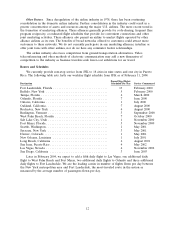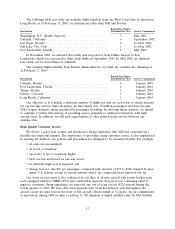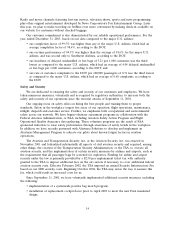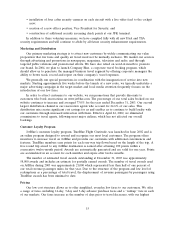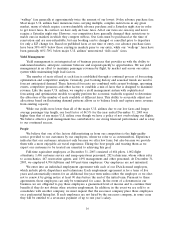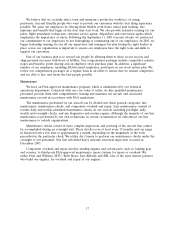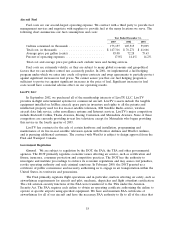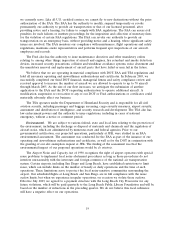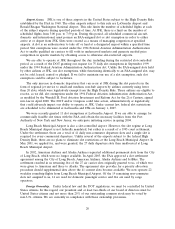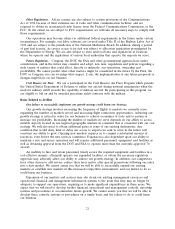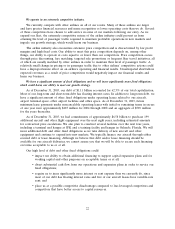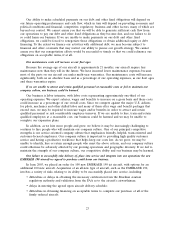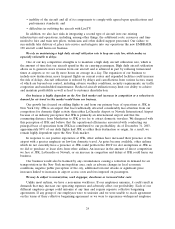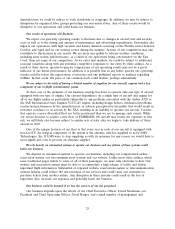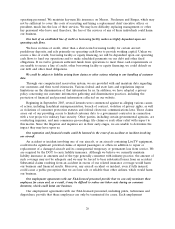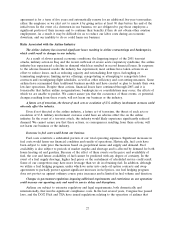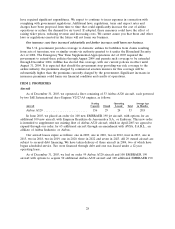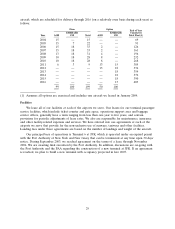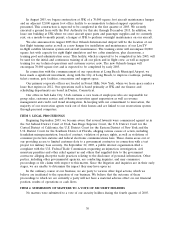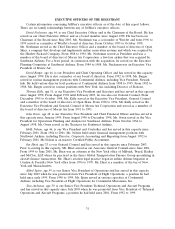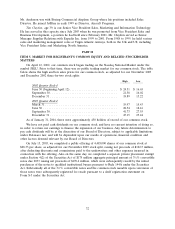JetBlue Airlines 2003 Annual Report Download - page 25
Download and view the complete annual report
Please find page 25 of the 2003 JetBlue Airlines annual report below. You can navigate through the pages in the report by either clicking on the pages listed below, or by using the keyword search tool below to find specific information within the annual report.We operate in an extremely competitive industry.
We currently compete with other airlines on all of our routes. Many of these airlines are larger
and have greater financial resources and name recognition or lower operating costs than we do. Several
of these competitors have chosen to add service in some of our markets following our entry. As we
expand our fleet, the extremely competitive nature of the airline industry could prevent us from
attaining the level of passenger traffic required to maintain profitable operations in new markets and
impede our growth strategy, which would harm our business.
The airline industry also encounters extensive price competition and is characterized by low profit
margins and high fixed costs. Our ability to meet this price competition depends on, among other
things, our ability to operate at costs equal to or lower than our competitors. Price competition occurs
through price discounting, fare matching, targeted sale promotions or frequent flyer travel initiatives, all
of which are usually matched by other airlines in order to maintain their level of passenger traffic. A
relatively small change in pricing or in passenger traffic due to other airlines’ competitive actions could
have a disproportionate effect on an airline’s operating and financial results. Unanticipated shortfalls in
expected revenues as a result of price competition would negatively impact our financial results and
harm our business.
We have a significant amount of fixed obligations and we will incur significantly more fixed obligations
which could harm our ability to meet our growth strategy.
As of December 31, 2003, our debt of $1.11 billion accounted for 62.3% of our total capitalization.
Most of our long-term and short-term debt has floating interest rates. In addition to long-term debt, we
have a significant amount of other fixed obligations under operating leases related to our aircraft,
airport terminal space, other airport facilities and office space. As of December 31, 2003, future
minimum lease payments under noncancelable operating leases with initial or remaining terms in excess
of one year were approximately $487 million for 2004 through 2008 and an aggregate of $589 million
for the years thereafter.
As of December 31, 2003, we had commitments of approximately $6.58 billion to purchase 199
additional aircraft and other flight equipment over the next eight years, including estimated amounts
for contractual price escalations. We also plan to construct several facilities over the next four years,
including a terminal and hangar at JFK and a training facility and hangar in Orlando, Florida. We will
incur additional debt and other fixed obligations as we take delivery of new aircraft and other
equipment and continue to expand into new markets. We typically finance our aircraft through either
secured debt or lease financing. Although we believe that debt and/or lease financing should be
available for our aircraft deliveries, we cannot assure you that we will be able to secure such financing
on terms acceptable to us or at all.
Our high level of debt and other fixed obligations could:
• impact our ability to obtain additional financing to support capital expansion plans and for
working capital and other purposes on acceptable terms or at all;
• divert substantial cash flow from our operations and expansion plans in order to service our
fixed obligations;
• require us to incur significantly more interest or rent expense than we currently do, since
most of our debt has floating interest rates and five of our aircraft leases have variable-rate
rent; and
• place us at a possible competitive disadvantage compared to less leveraged competitors and
competitors that have better access to capital resources.
22


